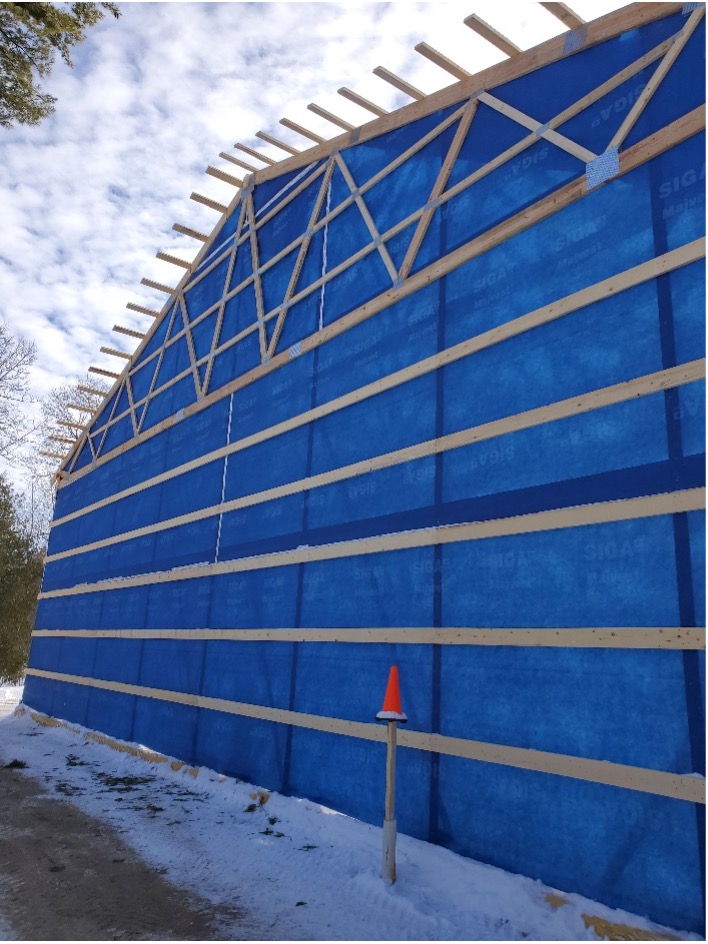
I was brought onto the construction team for this project after many of the decisions were already in place. The design was, for the most part, finished. Many of the assemblies had been determined (including the decision to use laminated posts 6 ft. o.c. with horizontal wall girts both inside and out). The original plan for the insulation was to use up to 7 in. of closed-cell spray foam in the walls. I was able to change the insulation strategy with a plan for a more “forgiving” assembly. We chose Rockwool’s 7-1/4-in. ComfortBatt, which has an insulation value of R-30.
There are a lot of advantages to using mineral wool insulation. First, it’s hydrophobic in nature. Because it is made from rocks (basalt) and steel slag—a byproduct of the steel industry—it doesn’t matter if it gets wet. Also, it doesn’t burn, rodents and insects don’t particularly like it, it is vapor open—meaning moisture can pass through the material—and it is a much denser product than other types of fibrous-batt insulation.
The density is the main reason I chose Rockwool. We were able to stack 24-in. by 48-in. batts inside a 6-ft.-wide by 18-ft.-tall wall cavity without the batts falling out of place. The product is very easy to cut and work with. (Because of the hydrophobic nature of mineral wool, this is the only fibrous insulation product I would use in this application.)
While planning the insulation details, our team met with a Rockwool rep, who suggested we install a horizontal board at the mid-point of the wall to eliminate any settling of the insulation, which could result in a gap at the top of the wall. We installed two batts high, almost 8 ft., then placed a 2×8…
Weekly Newsletter
Get building science and energy efficiency advice, plus special offers, in your inbox.

This article is only available to GBA Prime Members
Sign up for a free trial and get instant access to this article as well as GBA’s complete library of premium articles and construction details.
Start Free TrialAlready a member? Log in















One Comment
Since this article was written, we've conducted our first blower door test in the 3000 square foot living quarters of the Barndominium. The test was before drywall. We were missing four exterior doors, we ended up sealing the openings using poly. The test came in at .76 ACH50. Not bad for a building with no structural sheathing and only an interior air control layer. I plan on blower door testing the rest of the building as soon as the exterior door are installed in the storage side of the structure.
Log in or become a member to post a comment.
Sign up Log in